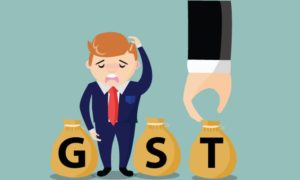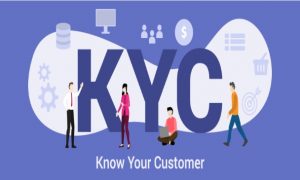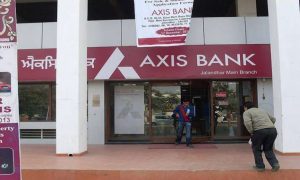Personal loans are unsecured, which means you don’t have to offer any collateral (such as a car or house) to be eligible. While this makes them more accessible than secured loans, they also often lead to higher interest rates. While these loans provide convenience, they may come with disadvantages such as elevated interest rates.
Read More: GPF Interest Rate: Contributed over Rs 5 lakh in FY23? Govt’s BIG clarification on interest credit
You can close a personal loan through full repayment or prepayment. Here’s a brief overview of both methods:
Full repayment: This method involves making all your scheduled payments (EMIs) until the loan is fully paid off. When the final EMI is settled, the loan is automatically considered closed.
Prepayment: This option involves settling the remaining balance of your loan before the scheduled end of the loan term. Keep in mind that there might be pre-closure charges, so it’s essential to consider this before deciding to prepay. When thinking about prepayment, there are several factors to consider:
Prepayment fees: Certain lenders might impose charges for early loan repayment. It’s crucial to review your loan agreement for any prepayment fees before making a decision.
Determining the total payoff: Request a payoff statement from your lender, which will outline the remaining loan balance along with any applicable prepayment fees.
Part prepayment: Unlike full prepayment, which involves closing the entire loan, part prepayment enables you to settle a portion of the outstanding principal amount. Part prepayment offers several advantages. By reducing the principal balance, you ultimately pay less interest over the remaining loan period. Additionally, some lenders permit using part prepayment to shorten the loan tenure while maintaining the same EMI amount. This approach cuts down the overall loan duration and helps save on interest costs.
Here’s a basic overview of how the prepayment process typically works:
Get in touch with your lender and let them know that you plan to prepay the loan
Ask for a loan statement that displays your remaining balance and any relevant prepayment charges.
Complete the prepayment by settling the remaining balance along with any applicable prepayment fees.
Provide any necessary paperwork, which may involve submitting a prepayment request form.
Upon receiving and processing your payment, the bank will close the loan, and you’ll receive a letter confirming the loan closure.
In essence, whether repaying the loan in full or through part payments, both options offer potential savings on interest for your loan. Evaluating the advantages and disadvantages while understanding your lender’s policies can help you decide which approach aligns best with your financial goals.
Frequently Asked Questions (FAQs)
Q. What does the term “personal loan” refer to?
A personal loan is a type of unsecured borrowing available from banks, credit unions, or online lenders. It offers a lump sum of money that you repay with interest through fixed monthly installments over an agreed-upon period.
Read More: Bajaj Finserv Mutual Fund launches Nifty 1D Rate Liquid ETF: Should you invest
Q. What is the maximum amount I can borrow through a personal loan?
The amount you can borrow is determined by factors like your creditworthiness, income, and the lender’s policies.
Q. How can you pay off your personal loan early?
Here are some strategies for settling your personal loan ahead of schedule:
Increase your payments whenever feasible
Every contribution matters! Even a modest extra amount each month can noticeably decrease your loan balance and accelerate the repayment timeline.
Think about directing tax refunds, bonuses, or unexpected cash towards reducing your loan principal.
Opt for a higher payment frequency
Certain lenders permit bi-weekly payments, where you pay half of your monthly amount every two weeks. Although the total sum paid remains unchanged, this approach can expedite loan repayment thanks to compound interest benefits.
Look into refinancing possibilities
If your credit is good and interest rates have decreased since you obtained your loan, refinancing at a lower rate can lead to substantial savings throughout the loan duration.
Trim your expenses to free up additional cash
Review your budget meticulously and pinpoint areas where spending can be reduced.
Redirect the saved extra funds towards your loan repayment.
Think about taking on a side hustle
Generating extra income from a part-time job or freelance work can offer additional funds to allocate towards your loan payments.
Focus on paying off high-interest debts first
If you have several loans, prioritise paying off those with the highest interest rates initially. Given that personal loans generally carry higher interest rates compared to mortgages or auto loans, tackling them first can lead to greater overall savings.
Read More: What is the latest KYC challenge with mutual funds and how to resolve it?
Take advantage of automatic payments
Enabling automatic payments ensures you never overlook a due date and assists you in staying aligned with your repayment objectives.
Steer clear of acquiring new debt
As you work on paying off your loan, avoid the urge to accumulate new debt. Doing so will complicate your financial management and postpone your debt-free objectives.
Stay aware of prepayment penalties
Before making a significant lump sum payment, review your loan agreement for potential prepayment penalties. These penalties could outweigh the interest savings.
Q. What documents do I need for loan prepayment?
It’s essential to have the right documents when closing a loan early. Here’s a breakdown of the usual documents involved:
From the borrower to the lender
Pre-closure request letter: This formal letter states your desire to pay off the loan early and asks about any associated pre-closure fees, if applicable.
Payment for pre-closure: This covers the remaining loan balance, any prepayment penalties, and accrued interest up to the pre-closure date.
From the lender to the borrower
Pre-closure statement: This document outlines the total amount due for the loan, including a breakdown of principal, interest, and any prepayment charges.
Loan closure letter/No Objection Certificate (NOC): This confirms that the loan has been fully repaid and absolves the borrower from any remaining responsibilities. The NOC may be a separate document or included within the closure letter.
Additional documents (depending on the loan type): In the case of secured loans, such as car loans, you may receive a receipt for the return of collateral documents, such as the vehicle’s registration certificate.
Q. What is the prepayment penalty imposed on closing a personal loan early?
Many financial institutions impose a prepayment penalty when a loan is settled ahead of schedule. This penalty is typically a percentage calculated based on either the remaining loan balance or the interest income the lender would have received if the loan had continued. Typically ranging from two percent to five percent of the loan amount, the exact penalty varies among lenders.
It’s crucial to note that your loan agreement contains comprehensive information about the prepayment penalty and its conditions. Ensure you carefully review the agreement before signing.
There are two strategies to potentially avoid the prepayment penalty. Firstly, seek a lender that doesn’t impose a penalty for early repayment. Secondly, consider a lender that permits penalty-free loan closure after a certain period within the loan tenure.





































